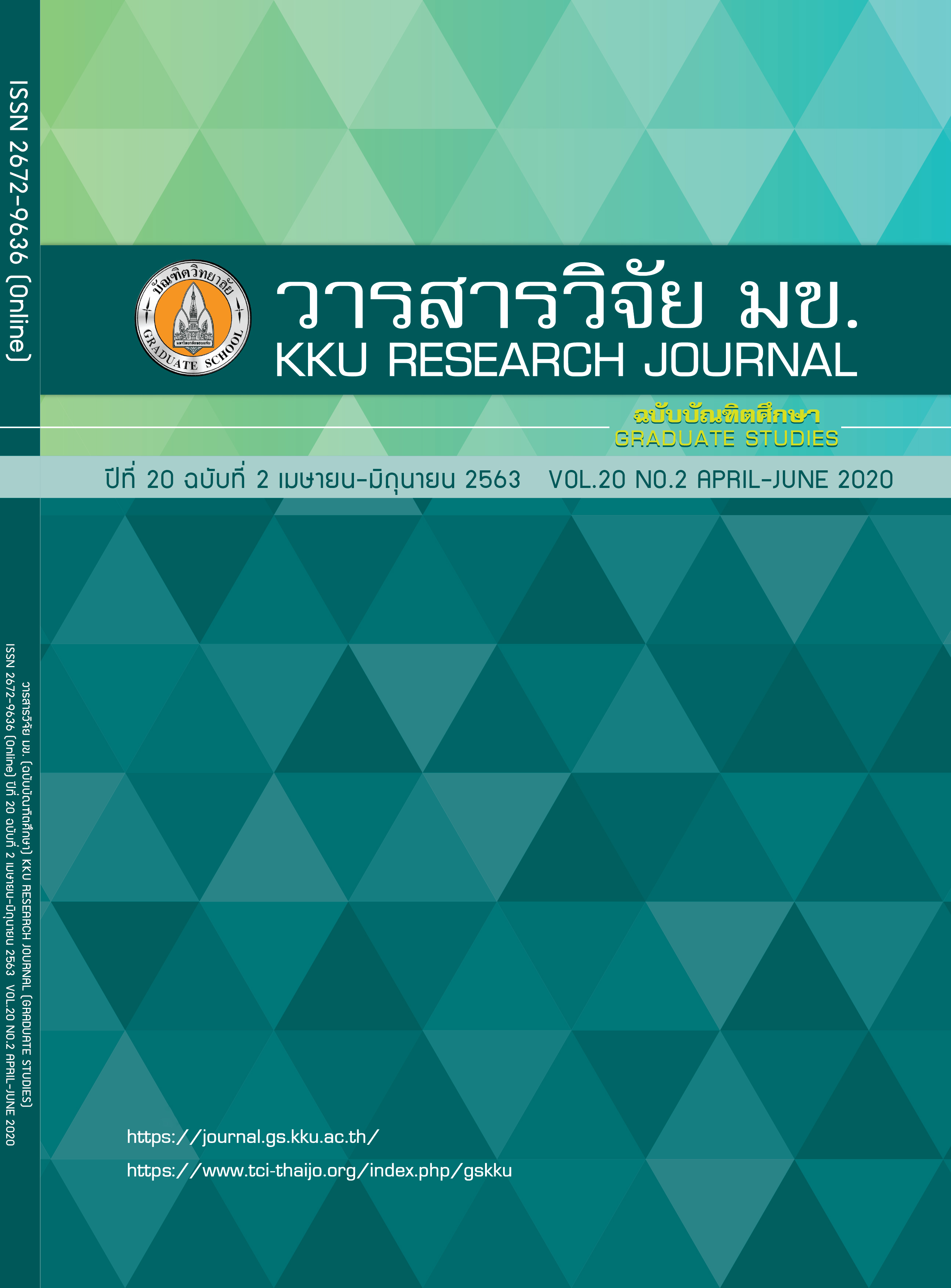The selection of Transit Oriented Development (TOD) locations along Light Rail Transit (LRT) Route using the integration of Analytic Hierarchy Process (AHP), Fuzzy Scoring Method (FSM) and Simple Additive Weight (SAW)
Keywords:
Analytic hierarchy process, Transit oriented development, Site selectionAbstract
This article was conducted to evaluate the most appropriate Transit Oriented Development (TOD) construction site along LRT line in Khon Kaen city using the integration of Analytic Hierarchy Process (AHP) Fuzzy Scoring Method (FSM) and Simple Additive Weight (SAW). Various decision elements were determined including main decision elements (Physical readiness potential and Potential to attract investment in land) along with various minor decision elements. It was found that the top there TOD ranking sites are Center Point station (0.777) followed by North Eastern University station (0.766) and City gate station (0.733) respectively.
References
Office of the National Economics and Social Development Council. the national economic and social development plan (NESDB), Vol 12; 2017, 144-162.
Center for Transit-Oriented Development (CTOD). Station area planning Manual. [Online] [Retrieved September 1,2015]. Available from http://www.ctod.org/portal/sites/default/files/station _planning_manual_nov07.pdf
Calthorpe P. The Next American metropolis: Ecology, community, and the American dream. New York: Princeton Architectural Press; 1993.
Cervero R, Kockelman K. Travel demand and the 3Ds: density, diversity, and design. Transpn Res.-D; 1997, 2(3): 199-219.
Klungboonkrong P. A decision support tool for the fuzzy multicriteria environmental sensitivity evaluation of urban road networks. Journal of the Eastern Asia Society for Transportation Studies; 1997, 2(6): 1961-1980.
Wey WM. A comparative location study for the joint development station of a mass rapid transit system: a case in Taichung City in Taiwan. Environment and Planning B: Planning and Design; 2009, 36(1): 573-587.
Wey WM. Smart growth and transit-oriented development planning in site selection for a new metro transit station in Taipei, Taiwan. Habitat International; 2015, 47(1): 158-168.
Wey WM. Alternative transit-oriented development evaluation in sustainable built environment planning. Habitat International; 2016, 55(1): 109-123.
Taki H, Mahmoud M, Mohammed E. Re-Assessing TOD index in Jakarta Metropolitan Region (JMR). Journal of Applied Geospatial Information; 2017, 1(1): 26-35.
Mamdoohi A, Farzin I, Gholi H. Integrated TOD and Urban Land Use Planning: Evidence from Iran, Kashan. Reviewed Paper Real Corp; 2017, 301-309.
Menarin S, Iamtrakul P, Phonro W, Srivanit M. Alternative approach for GIS based evaluation of Transit Oriented Development: A case study of Saga city, Japan. Journal of Society for Transportation and Traffic Studies; 2011, 2(1): 27-45.
Kang S, Lee S. AHP-Based decision making process for construction of public transportation city model : Case study of Jeju, Korea. Joint International Conference on Computing and Decision Making in Civil and Building Engineering; 2006, 1976-1985.
Mohajeri N, Gholam R. Railway station site selection using analytical hierarchy process and data envelopment analysis. Computers and Industrial Engineering; 2010, 59(1): 107-114.
Bejrananda M. Spatial Capacity Analysis for Transit Oriented Development in Khon Kaen City. Built Environment Inquiry, Faculty of Architecture KhonKaen University. 2018; 17(2), 93-114.
Center for Transit-Oriented Development (CTOD). Transit-Oriented Development Strategic Plan. Metro TOD Program. Report for Metro TOD Program in Portland, OR; 2011 [Online] [Retrieved September 1, 2018]. Available from http://ctod.org/pdfs/2011PortlandTODweb.pdf.
Office of transport and Traffic Policy and Planning. Final Report of the study design details of the public transport system in Khon Kaen province, and environmental impact. Sustainable Infrastructure Research and Development Center; 2017
Klungboonkrong P. Sustainable Urban Transportation Planning: Principle and Practice. Sustainable infrastructure research and development center, Faculty of civil engineering KhonKaen University; 2018, 349-385.
Saaty TL. The analytic hierarchy process: planning, priority setting, resource allocation. New York; London: McGraw-Hill International Book Co; 1980. Boston, MA: Springer US; 2001.
Klungboonkrong P. A microcomputer-aided system for the multicriteria environment evaluation: The City of Unley case study, Australia. Journal of the Eastern Asia Society of Transportation Studies (EASTS): Environment and Safety; 1999, 3(1): 99-114.
Saaty TL, Vargas, L. G. Models, Methods, Concepts & Applications of the Analytic Hierarchy Process; 2001.
Saaty TL. How to make a decision: The analytic hierarchy process. Eur. J. Oper. Res; 1990, 48(1): 9-26.
Chen SJ, Hwang C. L. Fuzzy Multiple Attribute Decision Making vol. 375. Berlin, Heidelberg: Springer Berlin Heidelberg; 1992.
Chen SH. Ranking fuzzy numbers with maximizing set and minimizing set. Fuzzy Sets and Systems; 1985, 17(2): 113–129
Zadeh LA. Fuzzy sets.” Information and Control 8; 1965, 338-353.
Saaty TL. The analytic hierarchy process: planning, priority setting, resource allocation. New York; London: McGraw-Hill International Book Co; 1980. Boston, MA: Springer US; 2001.



